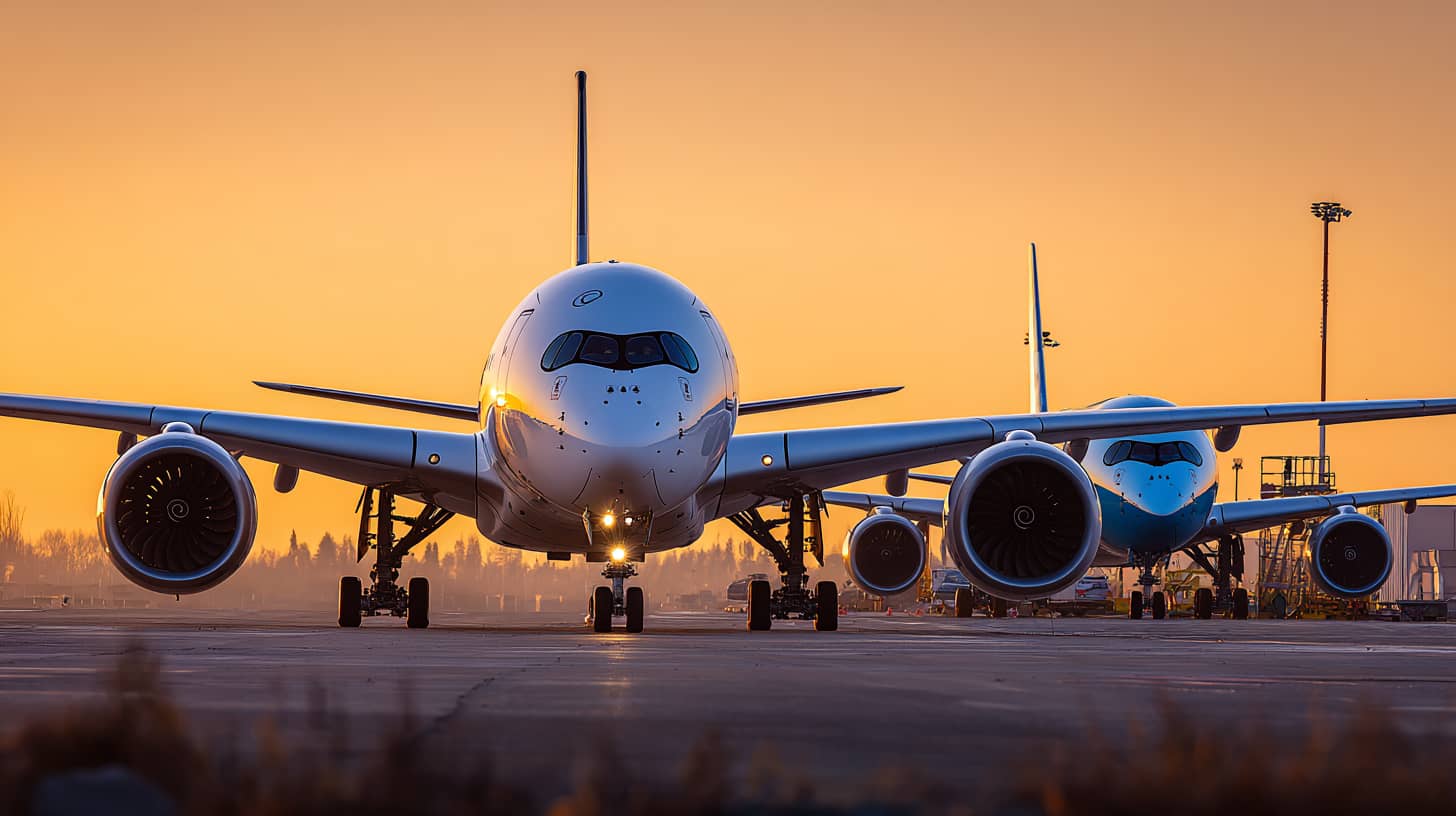When surface technology determines airline success
What do the Boeing 787 and Airbus A350 have in common? Both are revolutionizing aviation not only through fuel efficiency, but also through completely new approaches in surface technology. This invisible material war determines maintenance costs, operating times and ultimately the success of entire aircraft programs.
While passengers evaluate design and comfort, engineers fight for every micrometer of surface perfection. Modern commercial aircraft are flying test laboratories for revolutionary coating technologies that are being developed today and will change entire industries tomorrow.
Carbon fiber changes everything
Why do composite hulls present aviation coating service experts with completely new challenges? Carbon fiber reacts differently to temperature fluctuations than aluminum. Traditional aircraft coating service providers had to completely rethink their approach.
Aircraft painting companies have developed specialized systems for composite substrates. These coatings must work just as well at minus 60 degrees Celsius as they do at plus 80 degrees in the desert. At the same time, they must not negate the weight advantages of carbon fiber.
The invisible difference
What is the difference between Boeing and Airbus surface systems? Both manufacturers have different philosophies. While one company focuses on maximum standardization, the other prefers customer-specific solutions for different climate zones and application profiles.
Aircraft fuselage paintwork for long-haul flights requires different specifications than for short-haul shuttles. UV resistance becomes critical when aircraft commute daily between Europe and Australia. Exposure to salt water at coastal airports poses additional challenges.
Innovation through extremes
How do manufacturers test coatings for 30-year service lives? Through acceleration processes that simulate years in weeks. Salt spray test expert procedures, UV resistance tests and temperature fluctuations in the extreme range reveal weak points before they occur in reality.
Aviation coating Expert teams work with materials from the aerospace industry. What protects satellites in space also helps commercial aircraft at an altitude of 12,000 meters. These technology transfers dramatically accelerate innovation.
Maintenance rethought
How does intelligent surface technology reduce maintenance costs? Modern coatings are self-diagnostic. Changes in color signal the need for maintenance before structural damage occurs. MRO coating service goes from reactive to proactive.
Business jet coating technologies are increasingly being used in scheduled aviation. What was developed for private jets is now optimizing fleet operations. Coating maintenance services are increasingly based on condition rather than rigid schedules.
Environment as a driver
Why are environmentally friendly coatings becoming a competitive advantage? Stricter environmental regulations make solvent-free systems a necessity. At the same time, airlines expect performance improvements, not compromises.
Aerospace coating specialist companies are developing water-based systems with improved performance. Painting helicopters is becoming a testing ground for innovative formulations that will later become standard in commercial aviation.
Digitalization of surface technology
How is Industry 4.0 changing aircraft painting? Networked production systems monitor every spraying process in real time. Quality control Surface protection is automated using AI-supported image analysis.
Hangar coating companies are investing in robotic systems that work more precisely than human painters. This automation not only improves quality, but also reduces health risks for employees.
Technology transfer to other industries
What works in aviation is revolutionizing other areas. Wind turbine coating benefits from lightweight construction technologies from aircraft development. Offshore Coating Service uses corrosion protection systems that were originally developed for aircraft exposed to salt water.
Even automotive applications benefit. Commercial vehicle coating and rail vehicle coating adapt aviation innovations for ground applications.
The future flies today
The material war between Boeing and Airbus is driving innovation in all areas. Professional painting service standards are rising continuously, while costs are falling due to efficiency gains.
Aircraft painting service is becoming the key technology for sustainable aviation. Those who develop the best surface solutions today will set the standards for the entire industry tomorrow.
The invisible war in the sky makes the world on the ground a better place.
